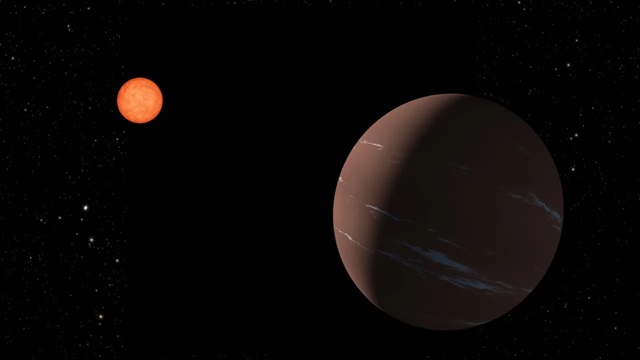
This illustration shows one way that planet TOI-715 b, a super-Earth in the habitable zone around its star, might appear to a nearby observer. (NASA)
NASA says that it has discovered what could be a “super-Earth,” a planet capable of human habitation. The planet orbits a small, reddish star that NASA says is “fairly close to us.” The planet is currently designated TOI-715 b.
But don’t pack your bags just yet, the planet is 137 light years away from Earth, so, until we have warp speed like on Star Trek no one alive on Earth could ever live to see it as a trip there would take centuries.
The recently discovered super-Earth, TOI-715 b, might be making its appearance at just the right time, explained NASA. Its parent star is a red dwarf, smaller and cooler than our Sun; a number of such stars are known to host small, rocky worlds. At the moment, they’re the best bet for finding habitable planets. These planets make far closer orbits than those around stars like our Sun, but because red dwarfs are smaller and cooler, the planets can crowd closer and still be safely within the star’s habitable zone.
Will you offer us a hand? Every gift, regardless of size, fuels our future.
Your critical contribution enables us to maintain our independence from shareholders or wealthy owners, allowing us to keep up reporting without bias. It means we can continue to make Jewish Business News available to everyone.
You can support us for as little as $1 via PayPal at office@jewishbusinessnews.com.
Thank you.
The tighter orbits also mean those that cross the faces of their stars – that is, when viewed by our space telescopes – cross far more often. In the case of planet b, that’s once every 19 days, a “year” on this strange world. So these star-crossing (“transiting”) planets can be more easily detected and more frequently observed. That’s the case for TESS (the Transiting Exoplanet Survey Satellite), which found the new planet and has been adding to astronomers’ stockpile of habitable-zone exoplanets since its launch in 2018. Observing such transits for, say, an Earth-sized planet around a Sun-like star (and waiting for an Earth year, 365 days, to catch another transit) is beyond the capability of existing space telescopes.
Planet TOI-175 b joins the list of habitable-zone planets that could be more closely scrutinized by the Webb telescope, perhaps even for signs of an atmosphere. Much will depend on the planet’s other properties, including how massive it is and whether it can be classed as a “water world” – making its atmosphere, if present, more prominent and far less difficult to detect than that of a more massive, denser and drier world, likely to hold its lower-profile atmosphere closer to the surface.



